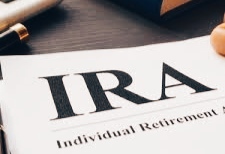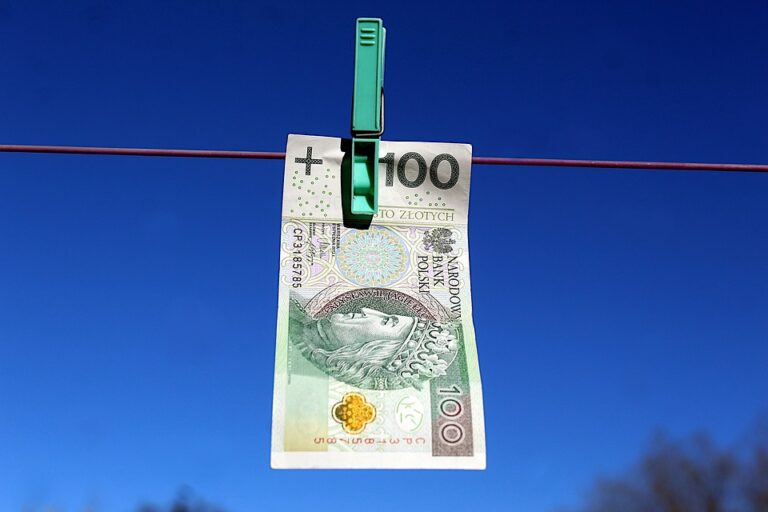Last updated Jul. 25, 2023 by Benedict Osas
Your right hemisphere of the brain simply won’t give up, will it? You’ve done your calculations. You’ve spent a lot of time going through estimates. You have mastered your Excel spreadsheets with the magical subtlety of Gandalf the Grey, but you are not 100% certain that you have performed the calculations correctly.
You want to retire early, right? All the resources you’ll ever need to achieve economic freedom and personal fulfillment are often hidden in how you do your calculations. You might be doomed financially if you get your figures wrong in a loan or mortgage calculation. That is where the FIRE retirement calculator comes to the rescue.

The Fire calculator
The FIRE Calculator is the most comprehensive tool of its kind. This calculator lets you input your costs, withdrawal rates, and everything else, but it now factors in tax events and changes in the cost of living.
Whether you expect your housing costs to decrease after retirement and intend to move, or you want to pay off your mortgage early, these supplementary details are helpful for planning.
In addition, you may determine how the sale of certain assets will affect your overall financial situation. The Retirement Calculator will help you estimate how much money you could get from selling a boat, cottage, or vehicle when you retire.
How To Use The Fire Calculator
The FIRE Calculator is a handy tool that helps you figure out how much money you need to achieve FIRE status, which means having enough to retire comfortably. It can also guide you on the steps to take to reach those goals.
To use the calculator effectively, you’ll need to provide various pieces of financial information. Let’s break them down:
- Current Age: Your current age serves as the starting point for your retirement planning.
- After-Tax Annual Income: Enter the amount of money you earn in a year after deducting taxes. This includes your salary, any side income, and investment income.
- Yearly Expenses/Cost of Living: Calculate your annual living expenses, including rent or mortgage payments, utilities, groceries, transportation, entertainment, and other essential costs.
- Current Investment Portfolio Amount: If you already have investments, like stocks, bonds, or retirement accounts (e.g., 401(k) or IRA), input their total value here.
- Yearly Contributions Toward Your Investment Portfolio: This is the money you plan to add to your investment accounts each year. Consistently contributing to your investments helps them grow over time.
- Expected Rate of Return on Your Investments: Your investments usually generate returns over time. Considering the historical market performance and risk tolerance, you can adjust this percentage using a slider.
- Current Savings Account Balance: Take into account the balance in your savings accounts, including emergency funds or other cash reserves.
- Percentage of Income You Contribute to Savings Accounts: Determine what portion of your income you regularly save and keep in savings accounts.
- Savings Rate of Return (Interest Rate): Savings accounts usually earn interest, so enter the estimated interest rate for your savings.
- Estimated Retirement Expenses on an Annual Basis, Including Income Taxes: Project the amount of money you’ll need each year during retirement, accounting for inflation and taxes.
Once you’ve filled in all the required fields, click on the “Calculate” button at the bottom of the calculator. The magic happens, and the calculator will present you with two key pieces of information:
FIRE Goal: This is the amount of money you should have in your investment portfolio to maintain your current lifestyle once you reach retirement. It’s the target number you need to achieve financial independence.
FIRE Age: This is the age at which you can expect to achieve financial independence and retire comfortably. It represents the point in time when your investments and savings can support your desired lifestyle.
Now comes experimenting with different scenarios. Here you can feel free to adjust the values in the calculator to explore different possibilities. You can see how increasing your yearly contributions, aiming for higher investment returns, or adjusting your expenses might impact your FIRE goal and age. You could also try other calculator types.
Other Calculator Types
#1. Retirement calculator
By utilizing Retirement Calculator, an individual can get help with preparing for the many financial aspects of their retirement. You have the option of using each calculation on its own for calculations that are quick and simple.
When one retires, they leave the workforce entirely and enter a time of idleness that will, for most individuals, last for the rest of their life.
#2. FatFIRE calculator
Calculating your FIRE number, which is the amount of invested assets you need to have in order to retire early and live off of investment income, is at the heart of the FIRE movement.
After determining your FIRE number, the next step is to increase your income while simultaneously reducing your expenses in order to reach your net worth goals as quickly as possible. You may get a rough estimate of your FIRE number by multiplying your yearly costs by 25.
Choosing a Sustainable Withdrawal Rate, which was prepared by three Trinity University professors and published in the American Association of Individual Investors Journal in 1998, is credited with popularizing this equation. The data set included in the article, which is more often referred to as the Trinity Study, determined that retirement plans with a specified net worth that had withdrawal rates of 4% per year or less had a 0% chance of exhausting their available assets.
Principles/ Aims of Financial Independence
The principles of the Financial Independence, Retire Early movement (FIRE) include economizing, putting money away regularly, and keeping track of your spending.
It’s the goal of this community to retire far sooner than is possible with a conventional budget and retirement plan by following a strict savings and investing strategy.
Vicki Robin and Joe Dominguez wrote the best-selling book Your Money or Your Life, and its central premise—that people should analyze every cost in terms of the number of working hours it took to pay for it—inspired FIRE.
How To Reach Financial Independence And Retire Early.
#1. Decide What Matters
The FIRE movement is all about more than just accumulating wealth. Its philosophy encourages people to rethink their approach to money, time, and happiness. Read early retirement blogs. Get more information.
Rather than being solely fixated on chasing money for its own sake, FIRE proponents emphasize the importance of living a life that aligns with one’s values and passions while achieving financial freedom to pursue those dreams.
To start your journey towards FIRE, take a moment to envision your ideal life. Think about what truly brings you joy and fulfillment.
It could be spending quality time with loved ones, pursuing a passion or hobby, traveling, or contributing to a cause you care deeply about. Understanding what matters most to you will serve as the driving force behind your financial decisions.
#2. Do the Math
Once you have a clear vision of your aspirations, it’s time to crunch the numbers. The FIRE Calculator is a valuable tool that helps you assess how much money you’ll need to achieve your financial goals.
This calculation considers factors like your current expenses, expected inflation, investment returns, and the desired retirement age. Having a concrete target to work towards can provide motivation and focus to stay on track.
To free up more money to put towards your financial goals, it’s essential to manage your spending wisely. Think of saving not as a restriction but as a means to achieve your desired life.
Review your budget and identify areas where you can cut back without sacrificing your overall well-being. Minimizing unnecessary expenses and adopting a frugal mindset can significantly increase your savings rate.
#3. Clear Your Debt Wisely
Debt can be a significant barrier to financial freedom, so tackling it strategically is crucial. Explore different debt repayment methods, like the debt snowball or avalanche approaches.
The debt snowball method involves paying off the smallest debts first, while the avalanche method prioritizes high-interest debts. Choose the strategy that suits your personality and financial situation best, and work diligently to become debt-free.
#4. Invest, Invest, Invest
While saving money is an essential first step, relying solely on traditional savings accounts won’t accelerate your journey to financial independence. This is where investing comes into play.
By investing wisely, you can leverage the power of compound interest to grow your wealth over time. Diversifying your investment portfolio and striking a balance between short-term and long-term investments will safeguard against potential risks and ensure you’re adequately prepared for both emergencies and retirement.
Final Opinion
The major goal of the Financial Independence, Retiring Early (FIRE) approach is to attain retirement at an earlier age than the traditional age of 65 or even 70, often in one’s early 40s or early 50s. This is accomplished by starting early in one’s career and saving as much money as possible. If you retire at a younger age, you will have more time to devote to the activities in life that bring you joy rather than having to spend it working.
Frequently Asked Questions On FIRE Calculator for Tracking Early Retirement
How do you calculate early retirement?
In the event of early retirement, a payout is lowered 5/9 of one percent for each month before regular retirement age, up to 36 months. If the benefit is paid for over 36 months, it will be decreased by 5/12 of one percent every month.
What are the best retirement calculators?
Some will show you how to improve your situation, whether that’s retiring early, being richer, or feeling safer. In addition to the MarketWatch Retirement Planner and the AARP Retirement Calculator, there is also the NewRetirement Retirement Planner and the American Funds Retirement Planning Calculator.
What is the FIRE calculation?
At the age of 35, you should have saved the equivalent of one year’s pay for retirement. When you’re 45, it’ll be three times your present wage; when you’re 55, it’ll be five times your yearly salary. Eight times your yearly wage by the time you retire.
How much do you need to retire early use this simple formula?
The 4% rule is a simple method for calculating how much you will need to save in order to obtain your desired yearly retirement income. To retire on an annual income of $80,000, you’ll need an investment portfolio of around $2 million ($80,000 / 0.04).
What is a good monthly retirement income?
Eighty percent of your salary in the years before you retire is a good target. If your annual income was $5,000 before you retired, your goal should be to reduce it to $4,000 yearly.
What is the average 401k balance for a 65-year-old?
According to the U.S. Census Bureau, just 41% of employees contribute to a 401(k), even though this is one of the greatest accessible alternatives for retirement savings for many individuals, Census Bureau.
Why are retirement calculators so different?
The calculator provides an estimate of the returns and inflation, but it should be understood that this is exactly what it is: an estimate. In addition, even a little miscalculation of the rate of return or the interest rate may significantly impact the results of the computations. Because the inputs will inevitably be erroneous, it is fair to assume that the outcomes will also be inaccurate.
How good is the Fidelity retirement calculator?
If you wish to retire at the age of 67, the calculator provided by Fidelity is pretty consistent with their recommendation that you should save ten times your yearly wage. Our research has shown that this is a reasonable rule of thumb to follow, especially for those who will be relying solely on their Social Security benefits and savings throughout their retirement years.







